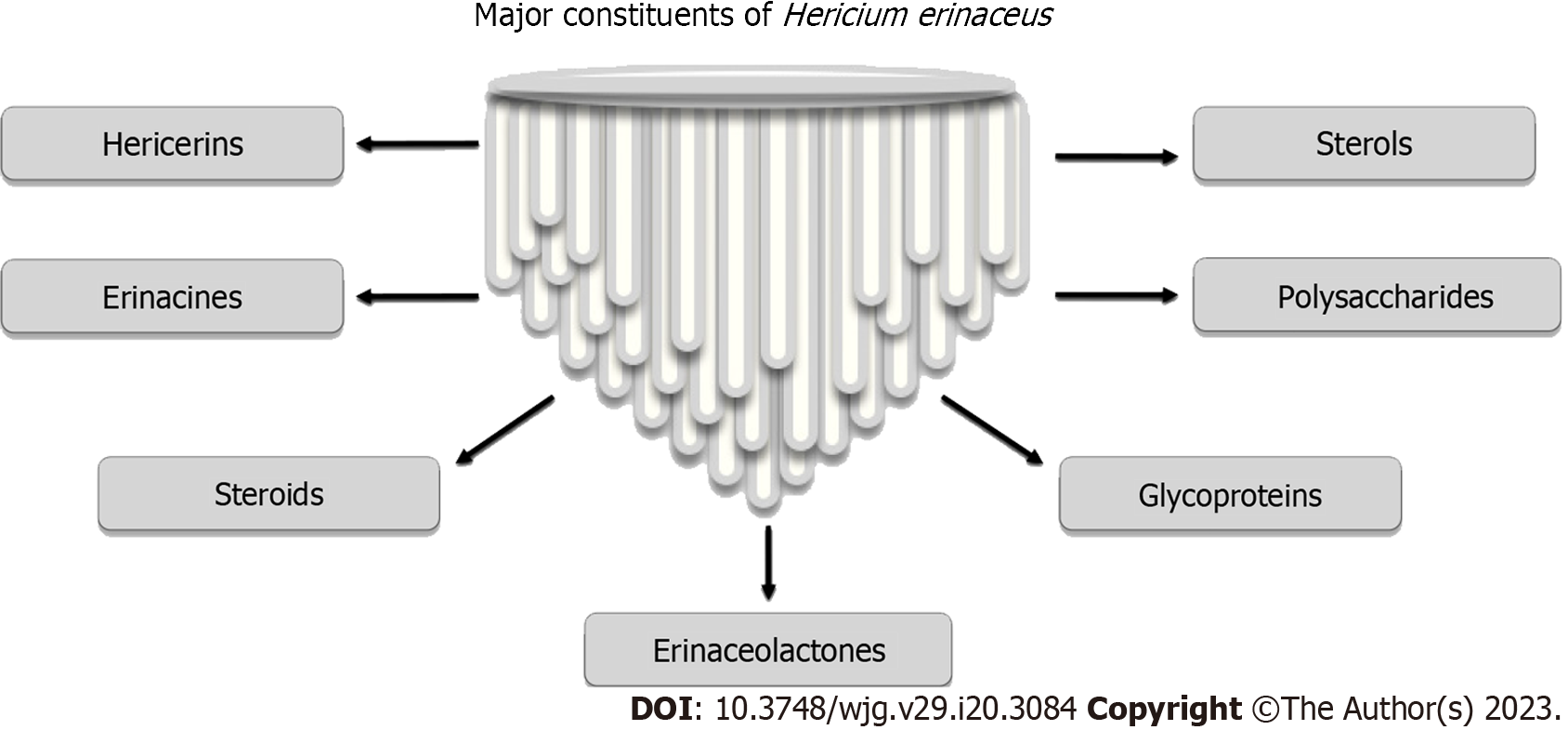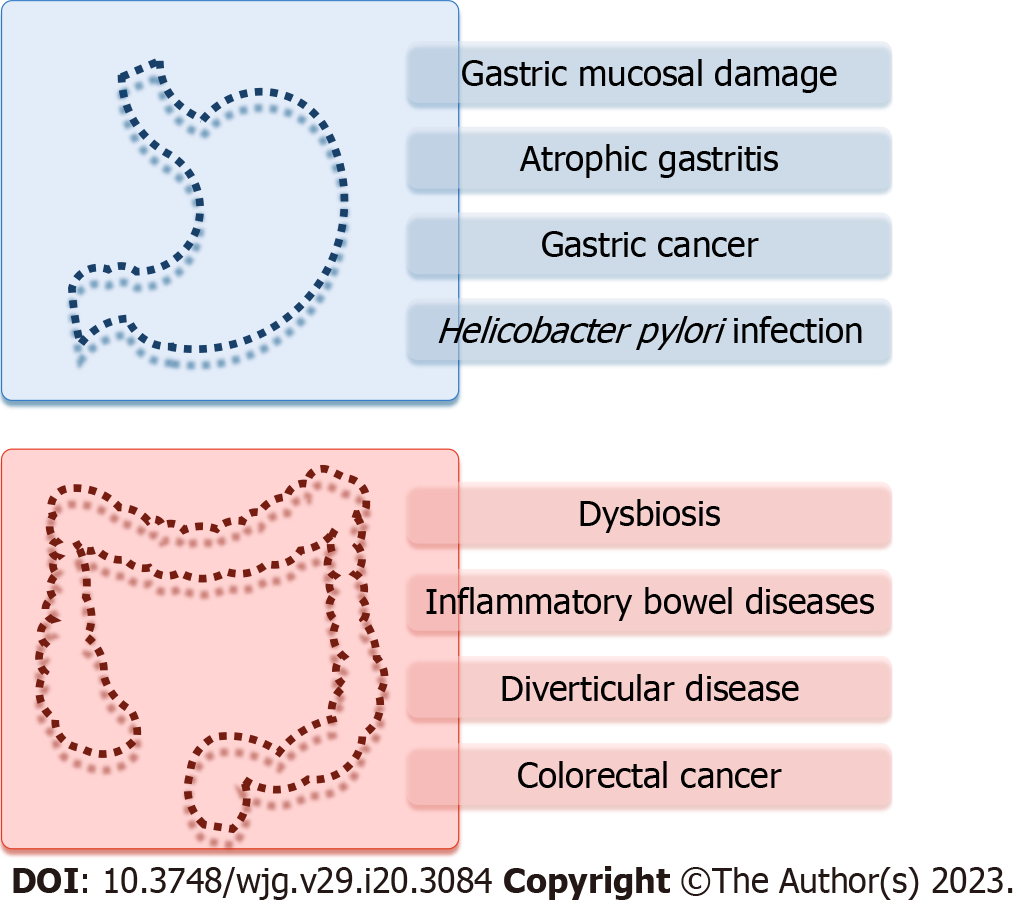Copyright
©The Author(s) 2023.
World J Gastroenterol. May 28, 2023; 29(20): 3048-3065
Published online May 28, 2023. doi: 10.3748/wjg.v29.i20.3048
Published online May 28, 2023. doi: 10.3748/wjg.v29.i20.3048
Figure 1 Several constituents can be obtained from Hericium erinaceus by different means of extraction (for example, by alcohol, chloroform, or petroleum).
However, fractions such as erinacines and polysaccharides are those most commonly used in studies conducted in the gastrointestinal setting.
Figure 2 Main antineoplastic molecular mechanisms of erinacines S and A from Hericiumerinaceus in gastric cancer cell models.
Erinacine S (in AGS gastric cancer cells) can activate a pathway (red arrows) with reactive oxygen species (ROS) mediated phosphorylation of focal adhesion kinase (FAK)/protein kinase B (also known as AKT)/p21-activated kinase 1 (PAK1). Subsequently, by trimethylation of histone H3, the latter pathway can induce the increased expression of TNF-related apoptosis-inducing ligand T and Fas ligand receptors by the cancer cell with the subsequent activation of apoptosis by initiating caspases 3, 8, and 9. Erinacine A (in TSGH9201 gastric cancer cells), once activated (blue arrows), the FAK/AKT/PAK1 pathway, in a similar manner as previously described, upregulates microtubule-associated scaffold protein 2/14-3-3 protein sigma proteins with subsequent activation of caspases-mediated apoptosis. In addition, erinacines can also modulate cell cycle regulation by preventing cell cycle continuation through the blockade at checkpoints, i.e., blocking cyclin-dependent kinases. ROS: Reactive oxygen species; FAK: Focal adhesion kinase; PAK: Activated kinase 1; MTUS2: Microtubule-associated scaffold protein 2; TRAIL: TNF-related apoptosis-inducing ligand T; Fas-L: Fas ligand; CDKs: Cyclin-dependent kinases; 1433S: 14-3-3 protein sigma.
Figure 3 The potential of Hericium erinaceus in upper and lower gastrointestinal tract diseases.
Hericium erinaceus is a promising candidate as a therapeutic modality or functional food in the treatment of various diseases of the gastrointestinal tract. This evidence stems from several experiences, largely preclinical, that have shown that this mushroom possesses anti-inflammatory and antineoplastic capabilities concerning the gastrointestinal tract.
- Citation: Gravina AG, Pellegrino R, Auletta S, Palladino G, Brandimarte G, D’Onofrio R, Arboretto G, Imperio G, Ventura A, Cipullo M, Romano M, Federico A. Hericium erinaceus, a medicinal fungus with a centuries-old history: Evidence in gastrointestinal diseases. World J Gastroenterol 2023; 29(20): 3048-3065
- URL: https://www.wjgnet.com/1007-9327/full/v29/i20/3048.htm
- DOI: https://dx.doi.org/10.3748/wjg.v29.i20.3048











